Travel period Dec 2011 – Jan 2012
Tasmania has a mild summer that is perfect for enjoying the stunning outdoor activities on offer. With endless stretches of gorgeous beaches, fresh seafood and marine life encounters happening in summer, it won’t take long for us to pack the car and go snorkelling!
Below is our 6-day self-drive itinerary that took us along the east coast of this beautiful island. We think this is the perfect way to spend six days in Tasmania! Obviously, there are parts that can be extended or shortened as you wish.
As we travelled to the island by sea, our 6-day Tasmania itinerary started and finished in the “Spirit of Tasmania” city of Devonport.
Getting to Tasmania
As Australia’s only island state, access to Tasmania is by air and sea only. We travelled to the island on New Year’s Eve 2012 from Port Melbourne by sea on the Spirit of Tasmania, taking about 10 hours to sail. This has the added benefit of letting us bring our own car and make the most of Tasmania’s touring potential.
The Melbourne-Devonport ferry route connects mainland Australia with Tasmania. Currently there is just the one ferry company operating this ferry service, Spirit of Tasmania. The trip on board Spirit of Tasmania takes approximately 9–11 hours.
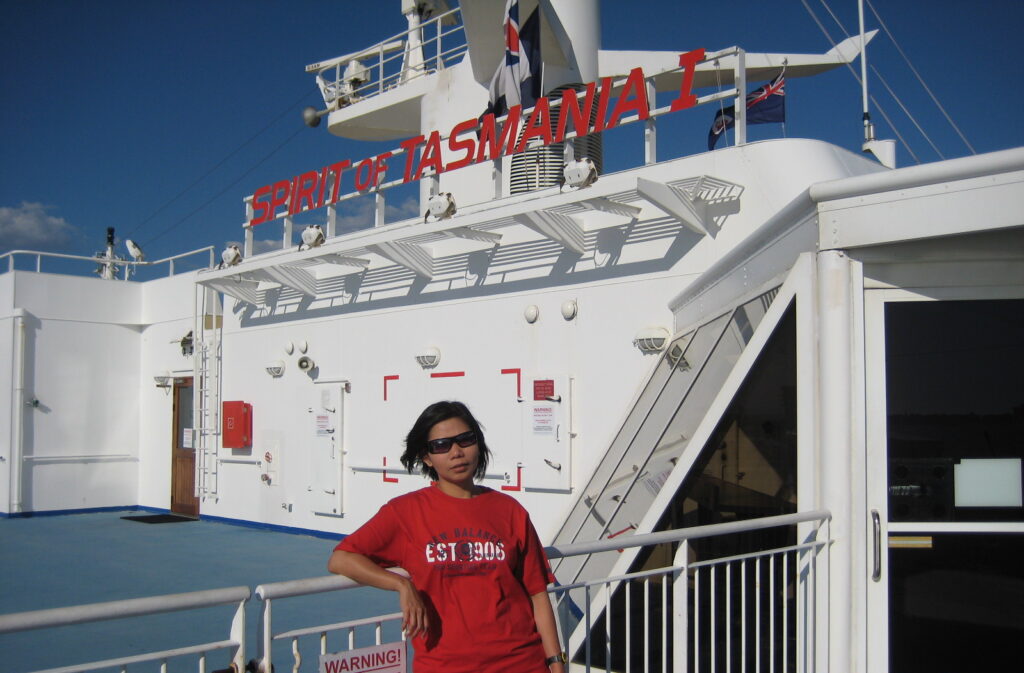
Tasmania in Brief
Tasmania is located 240 kilometres south-east of mainland Australia, and is separated by Bass Strait. Tasmania’s capital city of Hobart was founded in 1804 as a penal colony, and is not only Australia’s southernmost city, it is also Australia’s second oldest capital city after Sydney.
Widely known to the locals as ‘Tassie’, Tasmania is Australia’s smallest state. The state packs a punch and has loads to offer. From a buzzing contemporary art scene to the historic towns, and from the beauty of a national park to the pristine beaches, Tasmania is truly spectacular.
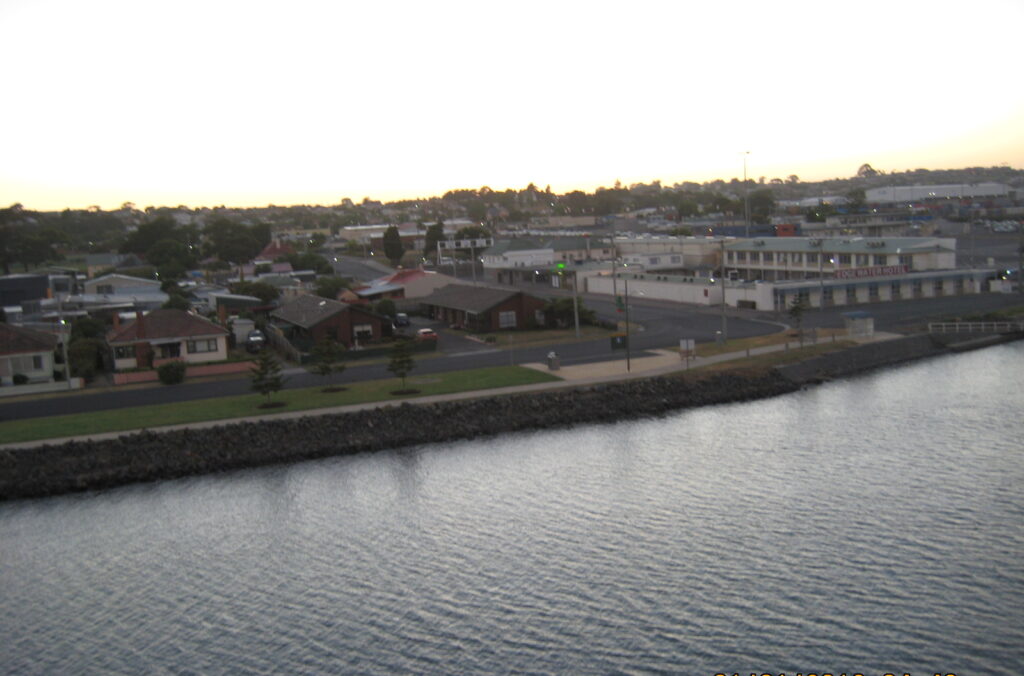
Day 1: Devonport, Deloraine and Bicheno
Our journey started when we arrived by ferry in Devonport. The city itself does not bustle with as much activity as Hobart or Launceston. However, it is the major sea gateway to Tasmania and its thriving port is the home for the Spirit of Tasmania.
On our way to Bicheno, we stopped and took a short break in Deloraine. Nestled up against the Great Western Tiers Mountain Range, this quaint town of Deloraine is home to one of Australia’s biggest craft fairs.
As we stroll through Deloraine’s picturesque streetscape, we bought ourselves some locally handmade crafts; a Tasmanian blackwood table clock and Tasmanian oak wall clock.
While the annual craft fair draws tens of thousands of people every November, Deloraine has a massive silk artwork on display year-round. This massive artwork was created by more than 300 people in the Deloraine area. All around this picturesque town are beautiful landscapes waiting to be discovered.

We left Deloraine and continued on driving to Bicheno, and found ourselves taking double the estimated two hour drive to arrive. The reason? The scenery was just simply breathtaking. Every corner featured a natural wonder. Of all the places we have been to in Australia, this may just be our favourite state.
We opted for 3-night stay in Bicheno, and this would be our travel base for the next three days. We stayed at the ‘Windows on Bicheno’. It was a luxury boutique accommodation, with spectacular ocean views from our private balcony. Our room was spotless and beautifully appointed. The bathroom was huge with a large walk-in shower and spa bath. The inclusive gourmet continental breakfasts complete this five-star indulgence.
Day 2: Bicheno – Snorkelling and Bicheno Blowhole
Woke up in the morning and were greeted by the morning view of the Tasman Sea, what a great start to the day. We had our breakfast at our leisure before planning our snorkelling adventure.
Located north of the Freycinet Peninsula, Bicheno has some of the best diving spots in Australia, with kelp-covered reefs and spectacular sponge gardens. We could not wait any longer to get into the water. We put our wetsuits on, got all the equipment ready and drove off to one of the places our host suggested best for snorkelling.
We spent half a day swimming, snorkelling and enjoying the underwater world. You also can experience this water wonderland by glass bottomed boat. The cool temperate waters offer excellent viewing of the creatures that live there and the rarely seen plant life is a spectacle in itself.

In the late afternoon we went to a curious natural attraction known as the Bicheno blowhole. This hole in the granite rocks emits small waves into powerful jets of water. It is about a 15-minute walk along a sandy coast from our accommodation. It is essentially waves coming in, splashing through a narrow channel in the rock and blowing water high into the air. It was worth a visit and fun.
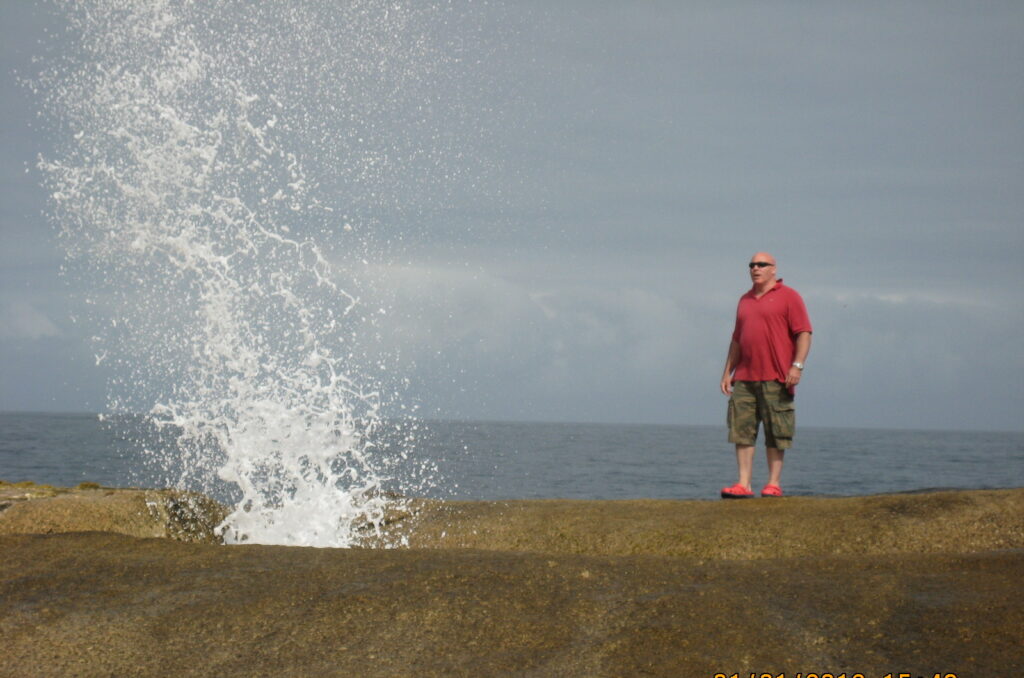
After we had enough watching occasional columns of water erupting and splashing, we started making our way back exploring the coastal township.
There are other things to do around Bicheno, such as penguin tours, scenic walks to rocking rock, and the whalers hill. Not to mention great food and wineries are nearby, with the Freycinet National Park and the Bay of Fires both only a short drive away.

Day 3: Freycinet National Park, Coles Bay, Swansea, and Eaglehawk Neck
Today is our last day in Bicheno, we took the opportunity to drive south and make the most out of it.
About 40-minute drive south of Bicheno, our first stop was Freycinet NP – it is one of the brightest jewels in Tasmania’s dazzling collection of natural gems, and best known for the stunning beauty of Wineglass Bay.
Plenty of things to do in this National Park. Take a stroll at picturesque bay of red cliffs of Sleepy Bay, check out the Cape Tourville lighthouse, snorkel in the turquoise waters of Honeymoon bay, or a walk uphill to Wineglass bay lookout for stunning views. The list just goes on and on.

The diversity in the coastal landscape is dramatic, with rocky coves and surging surf around one corner, and sheltered bays and sandy beaches around the next.
Next, we make a short visit to Coles Bay – a great little town centre and we had our late lunch at a little espresso bar with views over the water to the National Park.
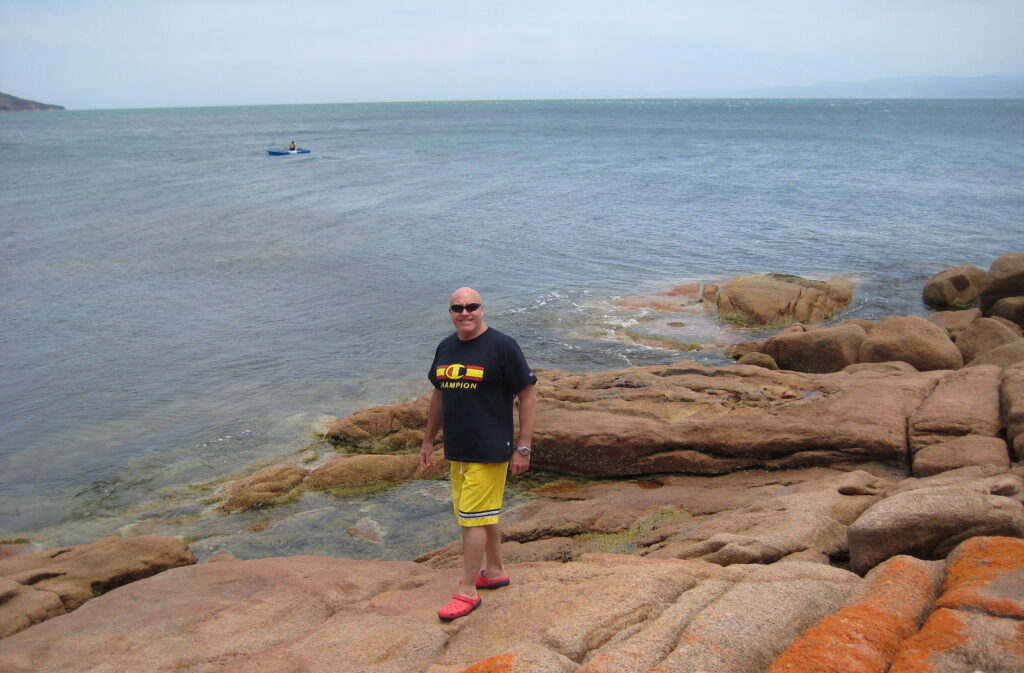
After lunch we headed to Swansea. It is about a 50-minute drive from Coles Bay, where you will find a friendly and laid-back town that is blessed with some of the coast’s longest and prettiest beaches.
The town centre is home to many interesting historic buildings, with a terrific local history museum that shares the town’s stories and artefacts.
We did not stay here long, as we impatiently wanted to get to Eaglehawk Neck – a small community in southeast Tasmania, built around a narrow bar of land, less than 30 meters wide.
Just south of the narrow isthmus at Eaglehawk Neck, the east coast of the peninsula has several wonders, including Tasmans Arch and Devils Kitchen.

Tasmans Arch is what’s left of the roof of a large sea cave, or tunnel, that was created by wave action over many thousands of years. The pressure of water and compressed air, sand, and stones acted on vertical cracks (joints) in the cliff, dislodging slabs and boulders.
The other highlight of the Eaglehawk Neck area is the Tessellated Pavement, a natural rock formation that looks as if someone carefully laid a mass of tiles at the northern end of Eaglehawk Neck Beach.

That brings us to the end of our day trip. It was an awesome long day out and we enjoyed every single bit of it. Not to mention the breathtaking scenery along the way.
Back to Bicheno, nothing better to ended our last night in Bicheno at the local restaurant with great food accompanied with a bottle of fabulous local wine. Happy days!
Day 4: Four Mile Creek and Scamander
Farewell to Bicheno as we travelled north along the coast to our next stop at Four Mile Creek. We headed out and had a swim in the crystal-clear water of Four Mile Creek beach. Other activities around the area are visiting the Brew Haus Bar and Café at White Sands Estate to sample the Iron house range of beer, stout and spirits.

We continued on traveling north along the coast to our next two day travel base town of Scamander. It is a beautiful little coastal town and a popular Tasmanian beach holiday town because of its wide, sandy beaches and views of the ocean.
The coastline between Bicheno and Scamander is known as the Surf Coast, and the beaches here offer surfers reliable swells year-round, with crystal clear waves rolling into smooth white sand just about everywhere you look.

We stayed at Blue Seas Holiday Villas. It is a self-contained accommodation, with a fully equipped kitchen and outdoor seating with ocean views. Just a stroll to Scamander beach, not to mention a golf course, a bar and restaurant located nearby.
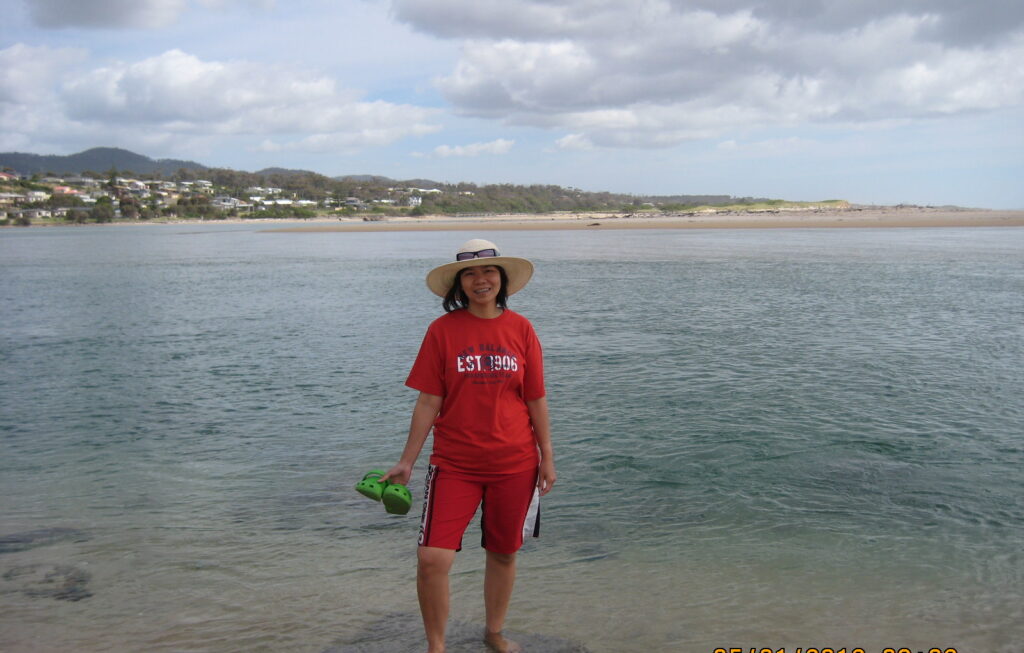
A five-minute stroll from our accommodation was a steel truss bridge that was built in 1936 and still stands today; it’s a very popular diving platform for the kids to jump off in summer, a great fish attracting structure and a handy place to cast a line from.
Flowing under the bridge is Scamander river. Apparently, the river serves as a great haven for fish. We cast our line from the riverbank and waited quietly for the fish to bite. unfortunately, we did not catch any fish, but it was so much fun and very relaxing experience. Happy memory!
Day 5: St Helens, Binalong Bay and Bay of Fires
Woke up in the morning and had our hearty breakfast outdoors with stunning views of the Scamander beach, it was a perfect way to start our day. We just relaxed and soaked up all the marvellous morning before we started to take a short drive north to St Helens.

It is the largest town on Tasmania’s north east coast and renowned for its catches of deep-sea fish and lobster. It is a popular destination for recreational fishing.
You will find delicious fresh seafood at the restaurants, great shopping and art galleries in town. There’s no shortage of eateries and shops to hang out in. Or take in the spectacular Peron Dunes and vast ocean beaches at St Helens Point.
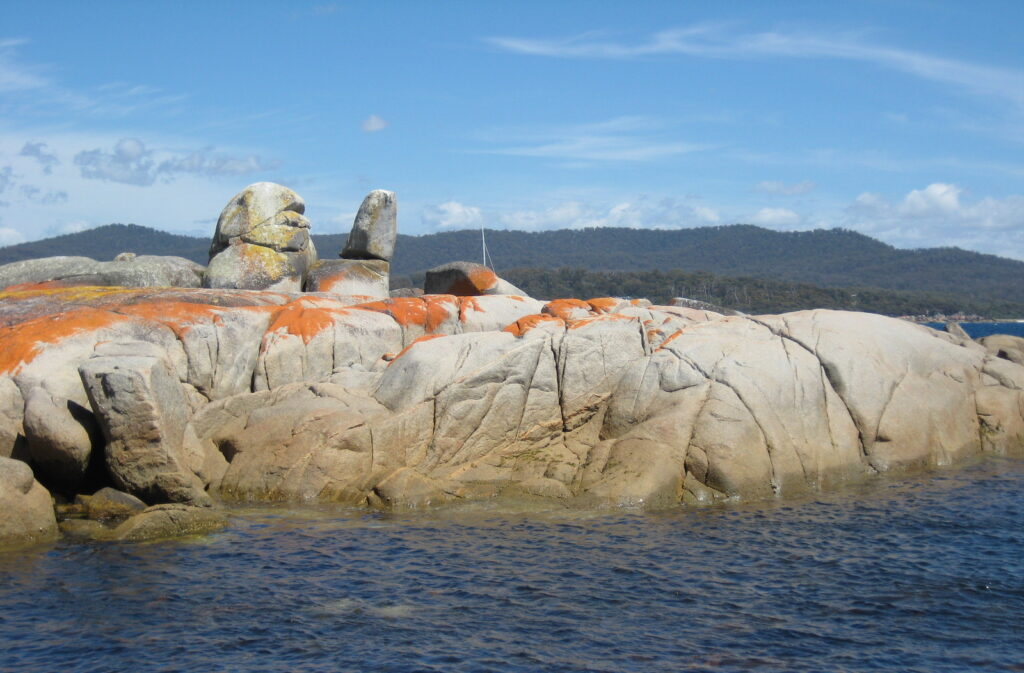
A ten-minute drive from St Helens brought us to Binalong Bay – a tranquil beach holiday town. This picturesque part of Tassie is one of the most scenic and beautiful places in Tasmania, from the blue sea and fine white sand to the bright orange lichen covered rocks, that creates the most spectacular view in the sunlight.
The area makes up the Bay of Fires Conservation Area – a protected coastal stretch from the seaside village of Binalong Bay in the south to Eddystone Point in the north. This place is wonderland for the eyes. Such a beautiful contrast of colours and makes the area an Instagram snap paradise.

Binalong Bay and the Bay of Fires offer all kinds of outdoor activities, from scenic coastal walks and beachside fun to some of the world’s best game fishing. It is a truly remarkable destination!
Day 6: Bridestowe Lavender Estate
Today is our last day in Tassie. As we were leaving on a night sail, we had about eight hours to kill. So, on our way to Devonport we made a detour to Bridestowe Lavender Estate.
It is about a 2-hour drive from Scamander. Bridestowe Estate is the largest lavender farm in the Southern Hemisphere, and famous for the spectacular view of the lavender in bloom in December and January.
We started our visit with a walk in the sea of purple flowers and enjoyed wandering through the rows and rows of lavender. The farm runs over 260 acres, with an estimated 650,000 plants, it is the world’s largest privately-owned lavender farm.
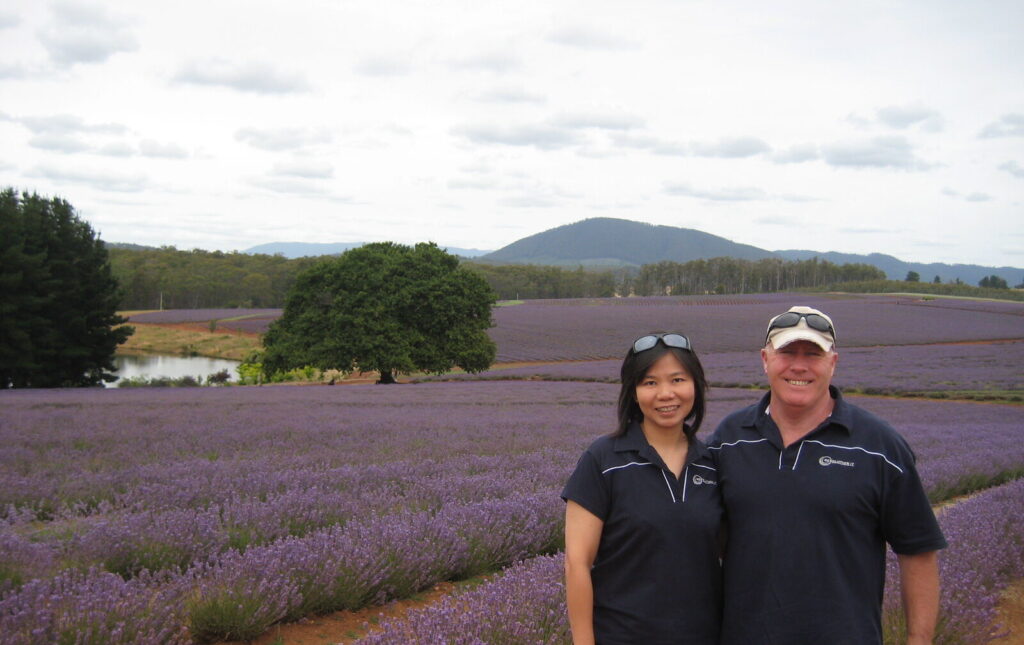
Given the warmth of the day, we decided that it would be nice if we sampled the lavender ice cream from the café. A delicious range of lavender inspired delicacies including their signature range of lavender ice-creams, lavender brownies and light seasonal meals are all available in the café.
We were fascinated with how the lavender oil was made. All the plants are grown from cuttings to make sure that the oil and flowers are of consistently high quality to a very ancient, tried and true method that produces clean, pure lavender oil without any additives.

The souvenir shop is stocked with unique products containing Bridestowe’s famous lavender oil and dried flower. Also, an extensive range of fragrant Australian-made gifts created for the bath, body and home and, of course, the world-famous Bobbie the Bear. We bought a few souvenirs and gifts to bring back home.
We spent a good 3,5 hours at this farm. We pretty much called it a day from here and headed to the Devonport port terminal to catch our ferry back to Melbourne.

It was an amazing six-day road trip for us. From quaint little towns and beautiful little coastal villages, to breathtaking views of the ocean and spectacular views of the lavender farm, makes for the perfect relaxing holiday.
Everywhere was simple and easy to drive in Tassie, but definitely allow plenty of extra time to get between points as there are so many scenic places to stop along the way.
Note: The information provided in this post was correct at time of publishing but may change. For final clarification please check with the relevant service.
Happy Travels!

